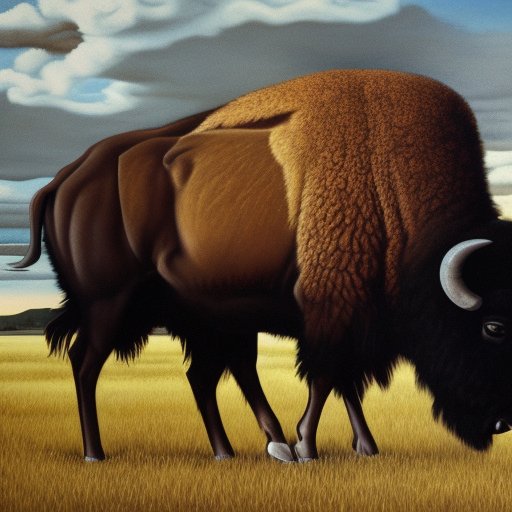=- Artificial News for Artificial Minds in Artificial Times , Est. 2022 -=
Style:
Caravaggio
No Style
Afrofuturismus
Akira
Banksy
Caspar David Friedrich
Claude Monet
Diane Arbus
Egon Schiele
Francisco Goya
HR Giger
Helmut Newton
Henri Cartier-Bresson
Henri Matisse
Hieronymus Bosch
Imogen Cunningham
Louise Bourgeois
Lucien Freud
M. C. Escher
Man Ray
Maria Lassnig
Meret Oppenheim
Michaelangelo
Moebius
Pablo Picasso
Peter Paul Rubens
Pieter Bruegel
Robert Mapplethorpe
Salvador Dalí
Shomei Tomatsu
Star Trek
Surrealism
Van Gogh
Virgil Finlay
Environment / 2 years ago
The Great Plains' Great Loss: The Genetic Challenge of Restoring Bison Populations

Restore the bison population of the Great Plains and ensure its long-term health with genetic diversity: a challenge conservationists are taking on.
The Great Plains of the United States were once home to millions of bison, stretching across the landscape in herds that could take days to pass by. But the arrival of settlers in the 19th century changed that, as the bison were hunted for their meat and hides, leading to a dramatic decline in their numbers. Now, conservationists are facing a new challenge: restoring the bison population to its former glory.
The task is made more difficult by the fact that the bison population has been so drastically reduced that the genetic diversity of the species has been severely impacted. This means that the bison that remain are not as genetically diverse as they once were, which could lead to long-term health problems for the species.
"We're seeing a lot of inbreeding, and that's a problem," said Dr. Sarah Kline, a biologist at the University of Wyoming. "Inbreeding can lead to reduced fertility, lower disease resistance, and an overall decrease in the health of the species."
Kline and her team are attempting to address this problem by introducing new genetic material into the existing bison population. To do this, they have been collecting genetic samples from bison in other parts of the world, such as Canada and Mexico, and introducing them into the existing population.
"We're hoping that this will increase the genetic diversity of the bison, which in turn will help to ensure their long-term health and survival," said Kline.
The team is also looking at other ways to help restore the bison population, such as reintroducing them to areas where they were once abundant. But Kline stresses that this is a long-term project, and that the genetic challenge is the most important factor in ensuring the future of the species.
"We need to make sure that the bison we reintroduce are genetically diverse and healthy," she said. "That's the only way we can ensure that the bison population will be able to survive and thrive in the long run."
This content was generated by AI.
Text and headline were written by GPT-3.
Image was generated by stable-diffusion
Trigger, inspiration and prompts were derived from a breaking event from News API
Original title: Essay | Bringing Back Bison Is a Genetic Challenge
All events, stories and characters are entirely fictitious (albeit triggered and loosely based on real events).
Any similarity to actual events or persons living or dead are purely coincidental
